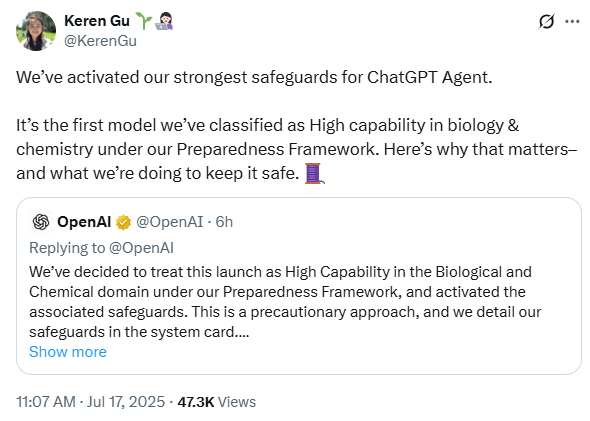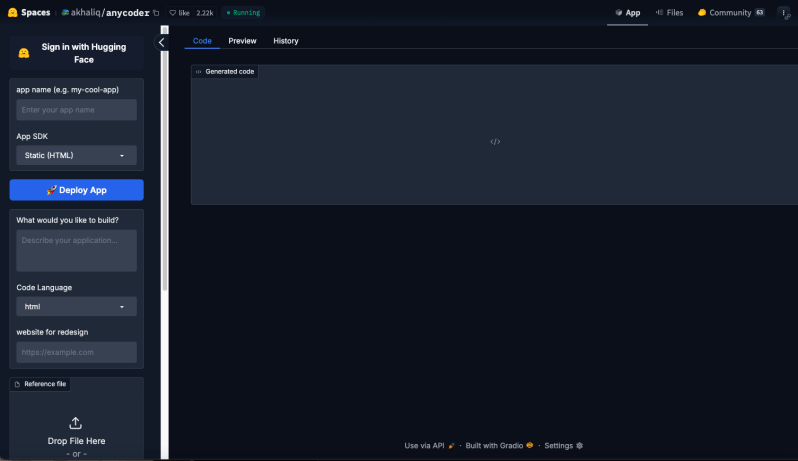Join our daily and weekly newsletters for the latest updates and exclusive content on industry-leading AI coverage. Learn More
Enterprise AI company Writer unveiled a new platform today that it claims will help businesses finally bridge the gap between AI’s theoretical potential and real-world results. The product, called “AI HQ,” represents a significant shift toward autonomous AI systems that can execute complex workflows across organizations.
“This is not another hype train, but a massive change coming to enterprise software,” said May Habib, Writer’s CEO and co-founder, at a press conference announcing the product. “The vast majority of the enterprise has not gotten meaningful results from generative AI, and it’s been two years. There has never before been such a gap between what the tech is capable of and what the enterprise results have been.”
AI HQ is Writer’s answer to this problem—a platform for building, activating, and supervising AI “agents” that can perform sequences of tasks traditionally requiring human intervention. These agents can make decisions, reason through problems, and take actions across different systems with little human oversight.
How Writer’s AI agents move beyond chatbots to deliver real business value
The announcement comes as many enterprises reevaluate their AI strategies. According to Habib, most AI implementations have failed to deliver substantial value, with businesses struggling to move beyond basic generative AI use cases.
“Process mapping is the new prompt engineering,” Habib said, highlighting how the company’s approach has evolved beyond simply crafting the right text prompts to designing entire workflows for AI systems.
AI HQ consists of three main components: a development environment called Agent Builder where IT and business teams collaboratively create agents; Writer Home, which provides access to over 100 pre-built agents for specific industries and functions; and observability tools for monitoring and governing agent behavior at scale.
During a product demonstration, Writer executives showed how customers are already using these technologies. In one example, an investment management firm uses Writer’s agents to automatically generate fund reports and personalized market commentary by pulling data from Snowflake, SEC filings, and real-time web searches.
Another demonstration showed a marketing workflow where an agent could analyze a strategy brief, create a project in Adobe Workfront, generate content, find or create supporting images, and prepare the material for legal review.
Enterprise AI that actually works: How Writer’s autonomous agents tackle complex business workflows
Writer’s pivot to agent-based AI reflects broader market trends. While many companies initially focused on using large language models for text generation and chat functions, businesses are increasingly exploring how AI can automate complex processes.
“Ten percent of the headcount is going to be enough,” Habib told Forbes in a recent interview about the potential workforce impact of agent technologies. This dramatic assertion underscores the transformative potential—and potential disruption—these technologies may bring to knowledge work.
Anna Griffin, Chief Marketing Officer at cybersecurity firm Commvault and an early adopter of Writer’s agent technology, spoke during the press conference about the value of connecting previously siloed systems.
“What if I could connect our Salesforce, Gainsite, Optimizely? What if I could pull together enough of the insights across these systems that we could actually work to create an experience for our customer that is seamless?” Griffin said. Her advice for others: “Think about the hardest, gnarliest problem your industry has, and start thinking about how agentic AI is going to solve that.”
The future of AI learning: Writer’s self-evolving models remember mistakes and learn without retraining
The event also featured a presentation from Waseem AlShikh, Writer’s co-founder and CTO, who unveiled research into “self-evolving models” — AI systems that can learn from their mistakes over time without additional training.
“If we expect AI to behave more like a human, we need it to learn more like a human,” AlShikh explained. He demonstrated how traditional AI models repeatedly make the same errors when faced with a maze challenge, while self-evolving models remember past failures and find better solutions.
“This unique architecture means that over time, as the model is used, it gains knowledge — a model that gets smarter the more you engage with it,” AlShikh said. Writer expects to have self-evolving models in pilot by the end of the year.
Inside Writer’s $1.9 billion valuation: How enterprise AI adoption is driving explosive growth
Writer’s aggressive expansion comes after raising $200 million in Series C funding last November, which valued the company at $1.9 billion. The funding round was co-led by Premji Invest, Radical Ventures, and ICONIQ Growth, with participation from major enterprise players including Salesforce Ventures, Adobe Ventures, and IBM Ventures.
The company has witnessed impressive growth, with a reported 160% net retention rate, meaning customers typically expand their contracts by 60% on average after initial adoption. According to a Forbes report published today, some clients have grown from initial contracts of $200,000-$300,000 to spending approximately $1 million each.
Writer’s approach differs from competitors like OpenAI and Anthropic, which have raised billions but focus more on developing general-purpose AI models. Instead, Writer has developed its own models — named Palmyra—specifically designed for enterprise use cases.
“We trained our own models even though everyone advised against it,” AlShikh told Forbes. This strategy has allowed Writer to create AI that’s more secure for enterprise deployment, as client data is retrieved from dedicated servers and isn’t used to train models, mitigating concerns about sensitive information leaks.
Navigating the $114 billion enterprise AI market: Opportunities and obstacles ahead
Writer’s ambitions face obstacles in a competitive landscape. The enterprise AI software market — projected to grow from $58 billion to $114 billion by 2027 — is attracting intense competition from established tech giants and well-funded startups alike.
Paul Dyrwal, VP of Generative AI at Marriott who appeared at Writer’s press conference, shared advice for enterprises navigating this rapidly evolving field: “Focus on fewer, higher-value opportunities rather than chasing every possibility.”
The announcement also comes amid growing concerns about AI’s impact on jobs. While Habib acknowledged that AI will change work dramatically, she painted an optimistic picture of the transition.
“Your people are instrumental to redesigning your processes to be AI-native and shaping what the future of work looks like,” she said. “We think that very soon, on a horizon of five to 10 years, we won’t be doing work as much as we will be building AI that does the work. This will create exciting new roles, new AI-related jobs that are interesting and rewarding.”
From software vendor to innovation partner: Writer’s vision for AI-native enterprise transformation
As Writer positions itself at the forefront of enterprise AI, Habib emphasized that the company sees itself as more than just a software vendor.
“We’re not a software vendor here. We see ourselves as more than that. We’re your innovation partners,” she said. “If you want to rebuild your company to be AI-native, if you want to be part of the most important enterprise transformation maybe ever, go sign up to be in the Writer agent beta right now. Together, we can dream big and build fast.”
The Agent Builder and observability tools are currently in beta, with general availability expected later this spring, while the Writer Home and library of ready-to-use agents are available to all customers starting today.
Daily insights on business use cases with VB Daily
If you want to impress your boss, VB Daily has you covered. We give you the inside scoop on what companies are doing with generative AI, from regulatory shifts to practical deployments, so you can share insights for maximum ROI.
Read our Privacy Policy
Thanks for subscribing. Check out more VB newsletters here.
An error occured.





















